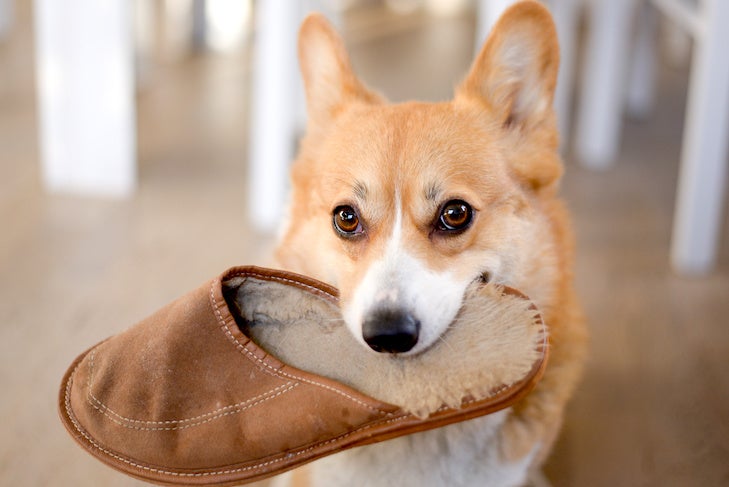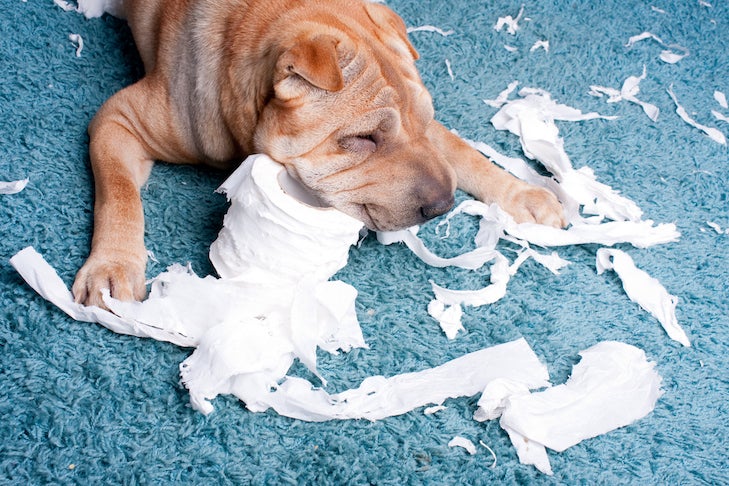
It took months of patience and diligence, but you finally have a trained dog. Then one morning, you wake up as usual and take your dog out for their morning walk. After hooking them up to the leash, you head outside. Suddenly you feel the sensation of flying, followed by the sensation of falling, and the sensation of pain.
While you were in your morning fog, your dog saw a squirrel and took off, yanking you and your morning coffee halfway across the lawn. As you recover from the fall, you look up and see them flying down the road in hot pursuit of their prey. You jump up and race after them.
The good news is that everyone has been there, in some way or another. But why do trained dogs suddenly go off the rails? These are common training sabotages that most owners will encounter at some point.
Dog Adolescence and Training
Like humans, dogs experience a defiant adolescent phase — more specifically, the age from 5 months through 18 months. Not all dogs go through this, and some go through it for only a month. Others will be in that stage for a long time.
But during this time, you should expect to see some sort of rebellion in your dog, no matter how small that rebellion may be. By teaching new commands clearly and staying consistent, you can minimize the effects of adolescence on your training. For instance, “come” today cannot be “come here” tomorrow and “get over here” the next day.

Communication Breakdown
Training may also break down if you haven’t trained thoroughly enough so that your dog completely understands the criteria for each command. It’s not enough if the dog comes to you when you call them in your living room when the two of you are alone. And if that’s the only time your dog comes to you, you probably won’t be that shocked when they go racing after another dog and don’t return when you call.
I have students who are frustrated that their dog won’t come the first time they call, yet will admit (grudgingly) they always say the command about five times before they get up to enforce it. That’s not fair to the dog. When you’re setting up a training session, make sure your dog understands all the ins and outs of the commands. For example, with the “come” command, ask yourself if your dog understands:
- Who they should come to (you, not the person who’s riding a bike past your house)
- What they should do exactly (run to you and sit in front of you)
- When they should come to you (instantly, which will help save their life if they run into the road)
- Where they should come (no matter where they are, they should come and sit in front of you)
- How they should come to you (directly and quickly)
- Why they should come to you (because they know they’ll get rewarded)
Gradual Deterioration
Often, you may pause your training because you’ve been letting inconsistencies slide, and you haven’t seen it or done anything about it yet.

Pay attention to when your dog responds slowly to a command. Address it immediately instead of waiting until they won’t do the command at all. It’s far better to fix a slow response to a command on a leash during a training session than to realize it when your dog is in the middle of the road.
Repetition Can Cause Boredom
Sometimes people just become lax in their training. They do the same commands, in the same places, and at the same time of day, and their dog becomes bored. Can you blame them?
To keep training interesting, make a list of every command your dog knows, and put each one on an index card. Every day, pull a few cards out and make those your training goals for the day. If your dog does a great job, the card goes into the discard pile until next week. If they need more help, shuffle the card into the main deck. In addition, look at the games you play with your dog during a training session and change them up, too.
So remember to be creative, be consistent, and be clear about your criteria.

